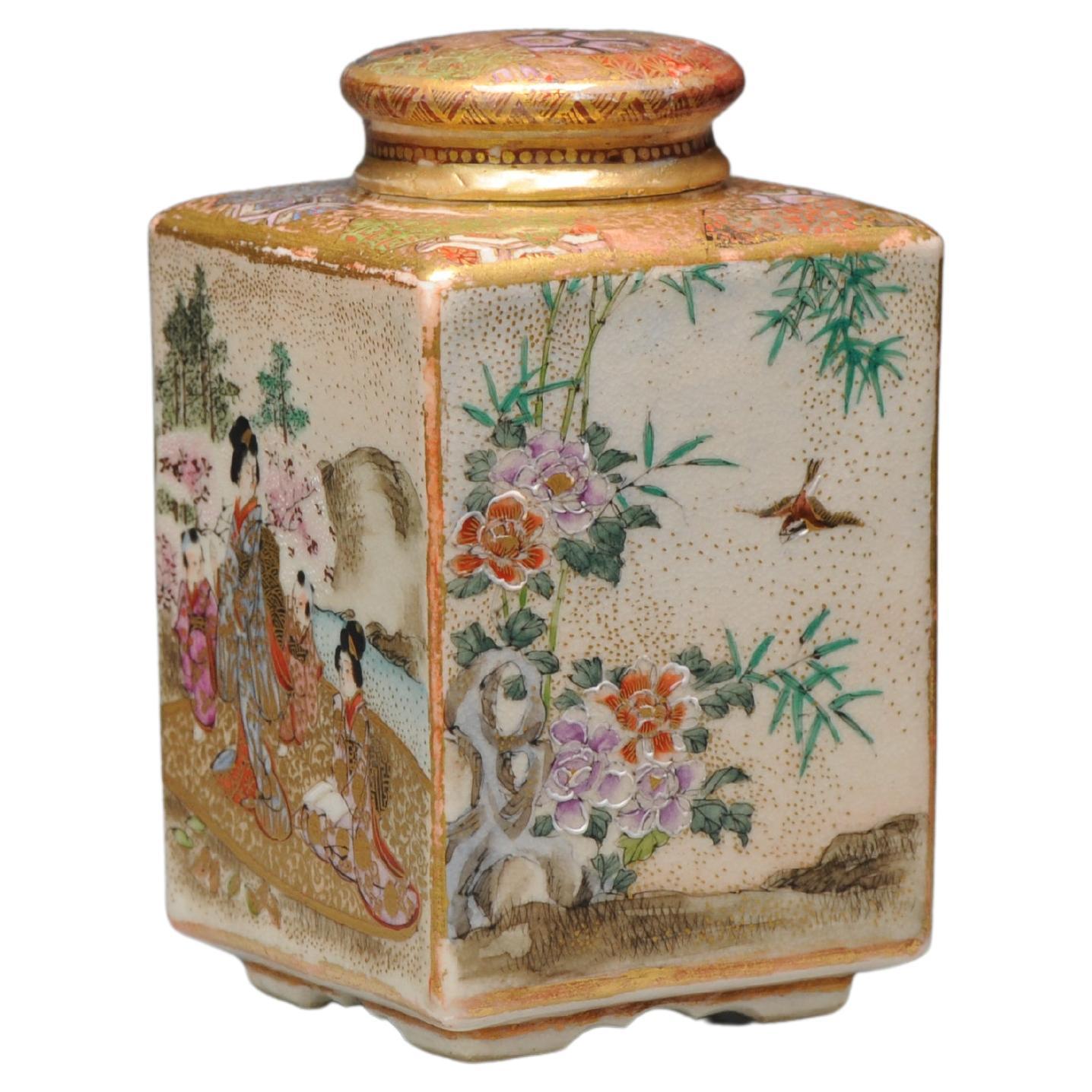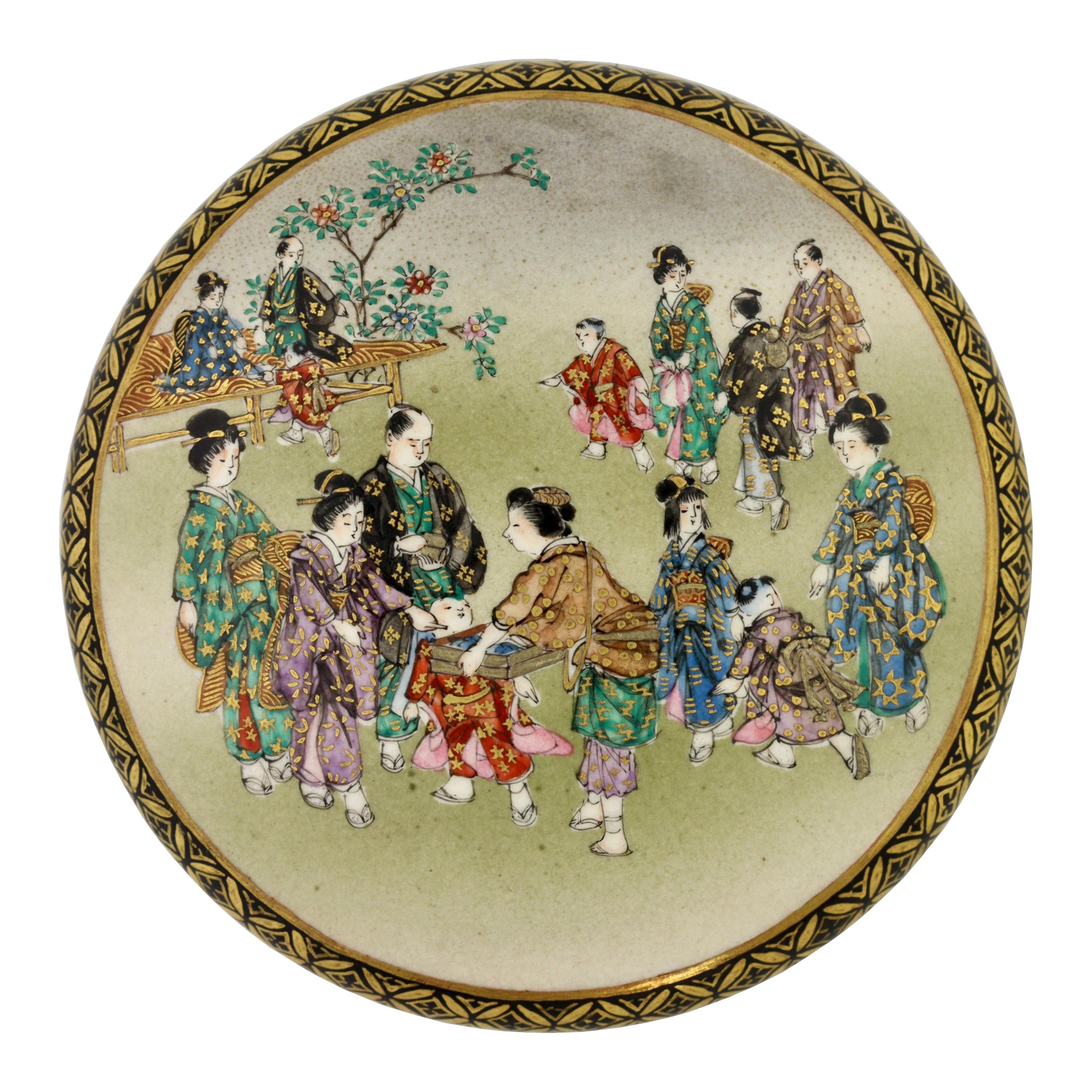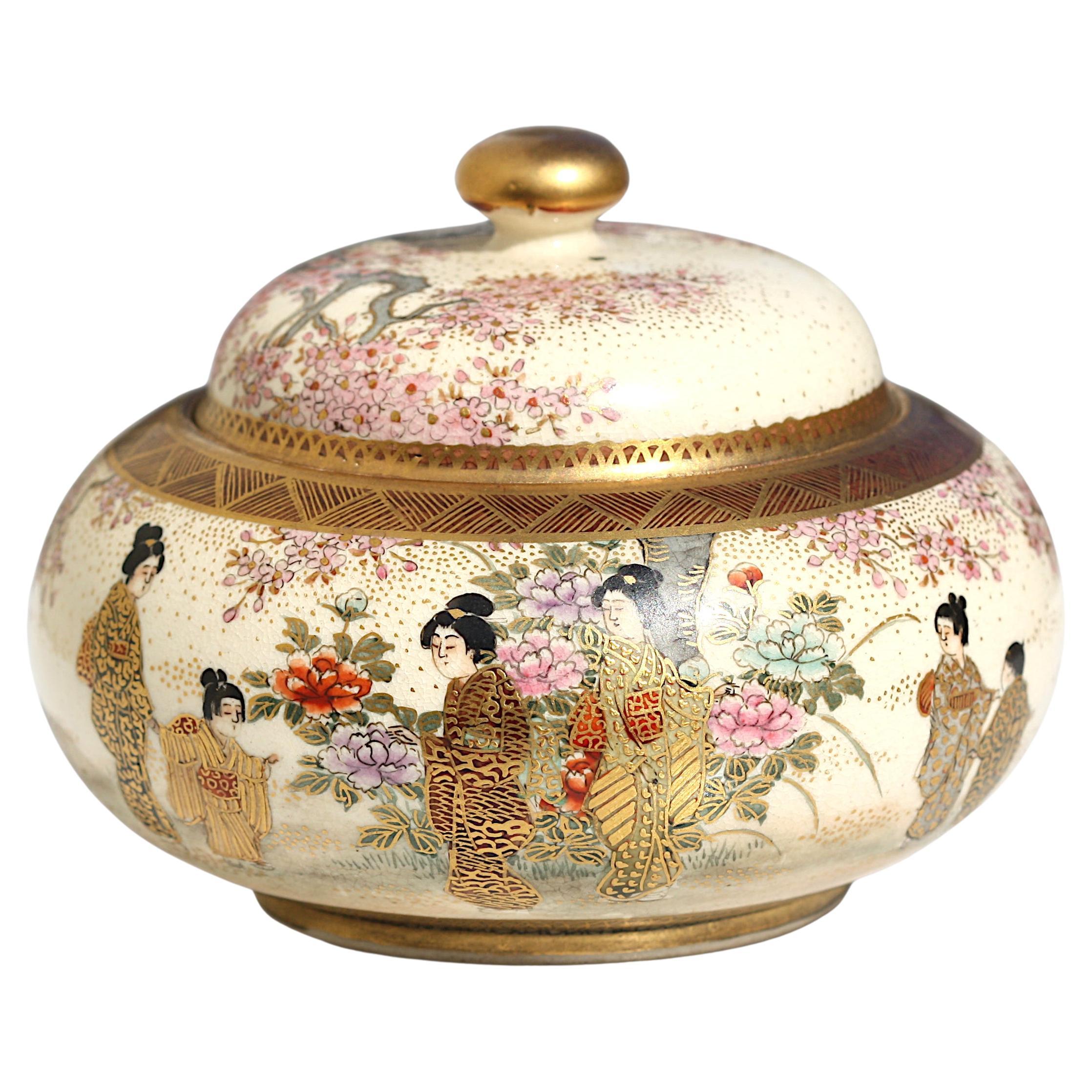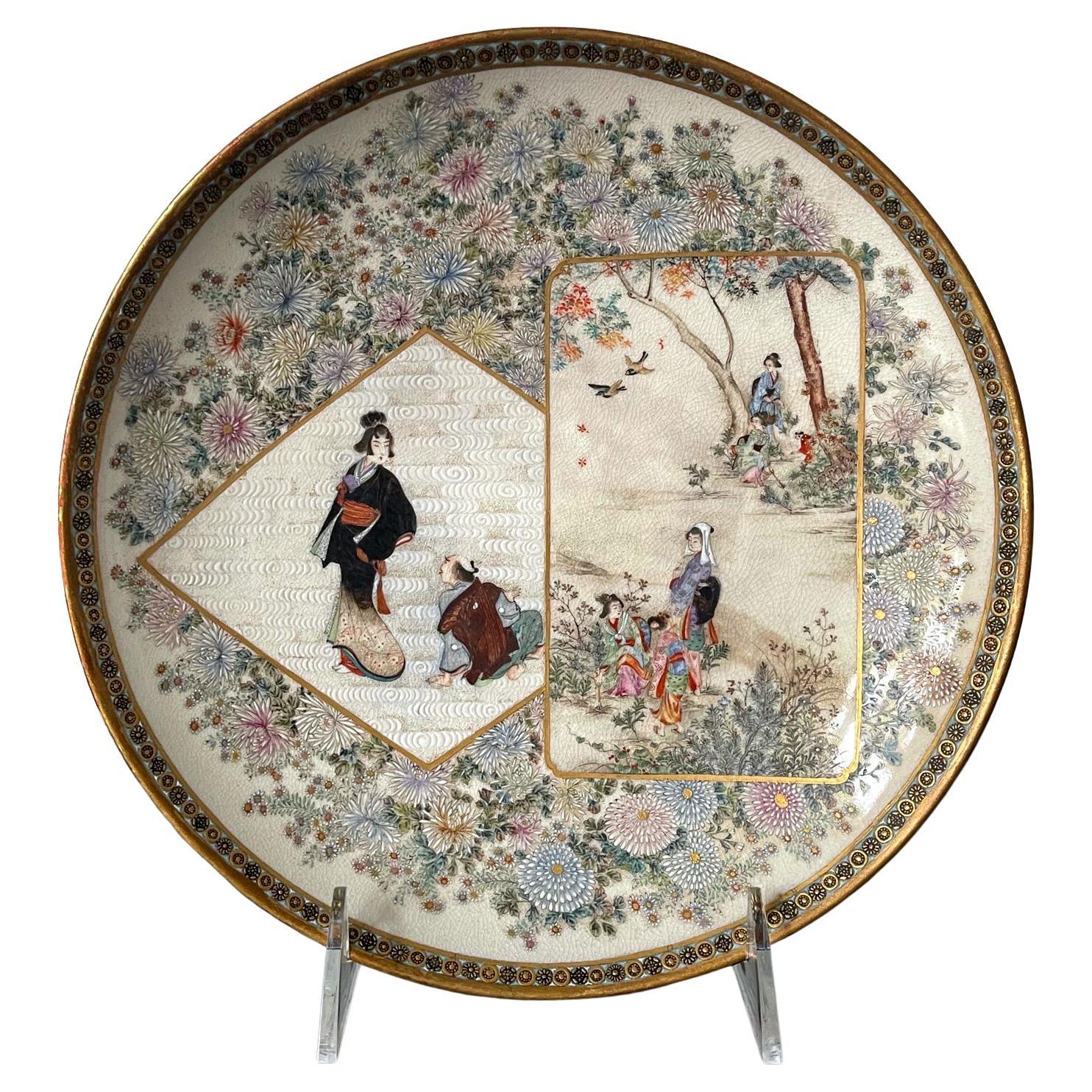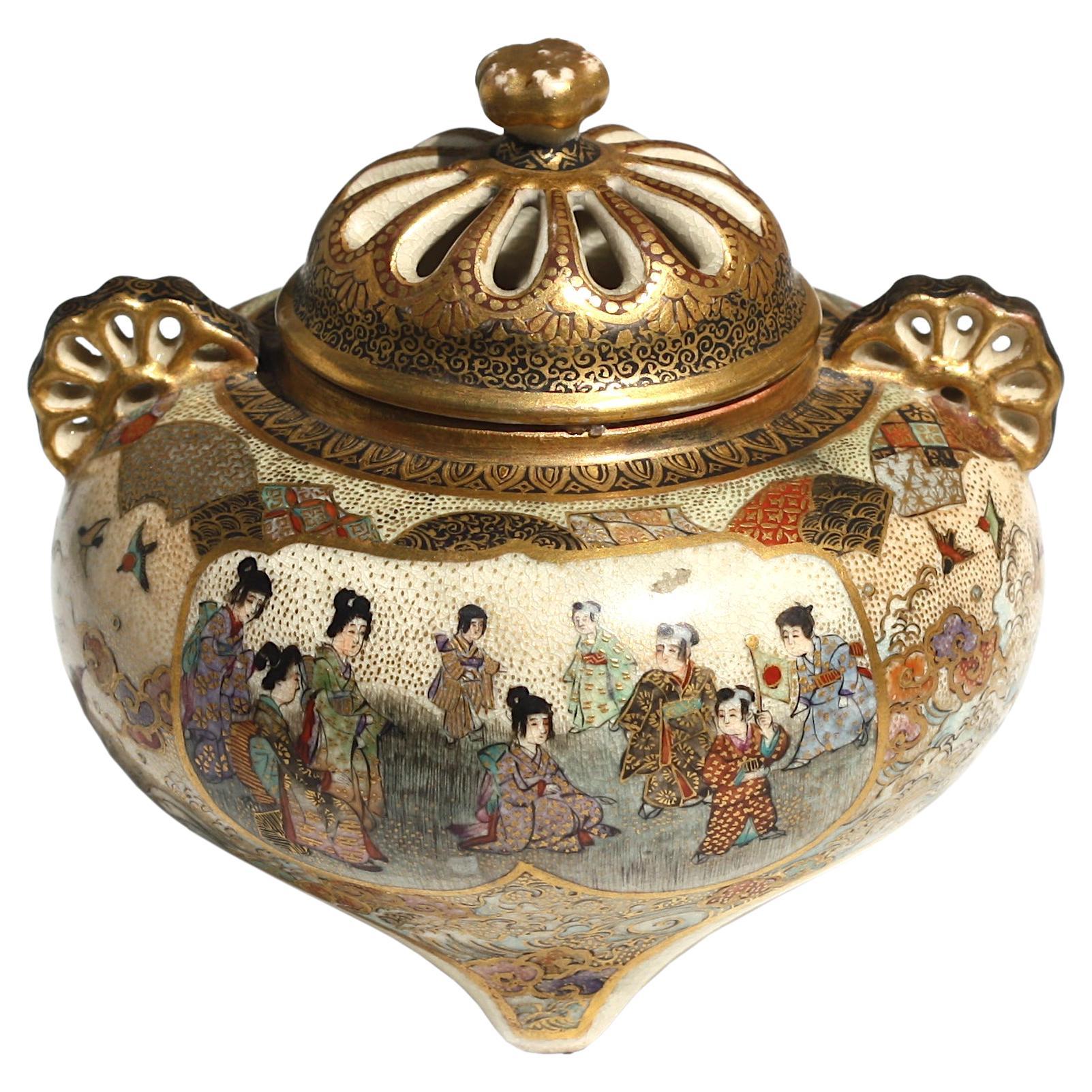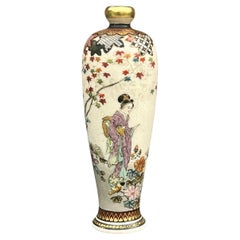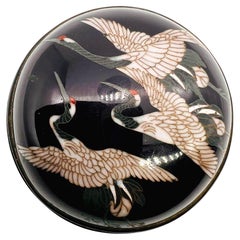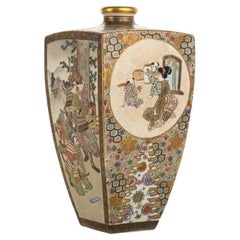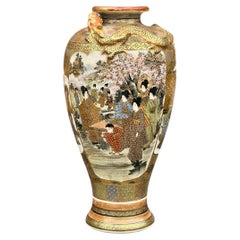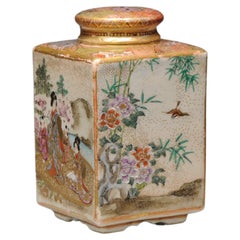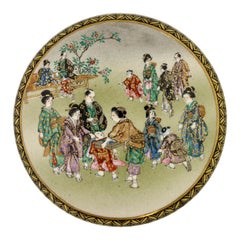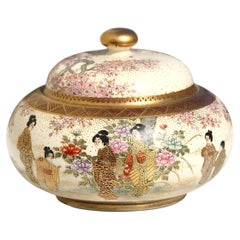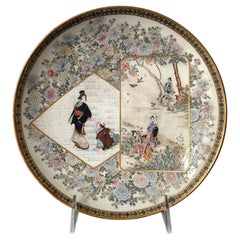Items Similar to A Fine Japanese Satsuma kogo (incense box) Signed by Kinkozan. Meiji period
Want more images or videos?
Request additional images or videos from the seller
1 of 14
A Fine Japanese Satsuma kogo (incense box) Signed by Kinkozan. Meiji period
$1,014.34
£750
€887.95
CA$1,402.42
A$1,570.94
CHF 825.12
MX$19,102.16
NOK 10,448.66
SEK 9,918.59
DKK 6,627.10
About the Item
A Satsuma circular kogo (incense box) and cover signed by Kinkozan
19th century
Finely painted in enamels and gilt, the cover with wisteria and a scene of a woman and children , the interior of the box with a colorful flowers.
Signed by Kinkozan.
In excellent condition.
Size: H -4 cm, diameter 9.5 cm
- Dimensions:Height: 1.78 in (4.5 cm)Diameter: 3.75 in (9.5 cm)
- Materials and Techniques:
- Place of Origin:
- Period:
- Date of Manufacture:1880
- Condition:Wear consistent with age and use.
- Seller Location:London, GB
- Reference Number:1stDibs: LU8001243116892
About the Seller
No Reviews Yet
Vetted Professional Seller
Every seller passes strict standards for authenticity and reliability
Established in 2001
1stDibs seller since 2023
16 sales on 1stDibs
- ShippingRetrieving quote...Shipping from: London, United Kingdom
- Return Policy
Authenticity Guarantee
In the unlikely event there’s an issue with an item’s authenticity, contact us within 1 year for a full refund. DetailsMoney-Back Guarantee
If your item is not as described, is damaged in transit, or does not arrive, contact us within 7 days for a full refund. Details24-Hour Cancellation
You have a 24-hour grace period in which to reconsider your purchase, with no questions asked.Vetted Professional Sellers
Our world-class sellers must adhere to strict standards for service and quality, maintaining the integrity of our listings.Price-Match Guarantee
If you find that a seller listed the same item for a lower price elsewhere, we’ll match it.Trusted Global Delivery
Our best-in-class carrier network provides specialized shipping options worldwide, including custom delivery.More From This Seller
View AllA Fine Japanese Satsuma vase signed by Ryokuzan. Meiji period
Located in London, GB
A exquisite Satsuma vase signed by Ryokuzan.
Meiji Era.
Of a slender ovoid shape featuring intricate hand-painted designs and delicate gilded accents.
The vase is adorned with...
Category
Antique 19th Century Japanese Ceramics
Materials
Ceramic, Porcelain
A Fine Japanese Cloisonné-enamel kogo box. Meiji period
Located in London, GB
A Fine Japanese Cloisonne Enamel Kogo Box.
Meiji period.
Worked in silver wire and decorated with cranes in flight on a dark blue background.
Interior in black enamel.
In go...
Category
Antique 19th Century Japanese Metalwork
Materials
Enamel
A Fine Antique Japanese Satsuma vase. Signed By Kozan.Meiji Era
Located in London, GB
A HIGH QUALITY JAPANESE SATSUMA VASE, MEIJI PERIOD PERIOD.
Signed By Kozan
of square tapered form, decorated with individual scenes of figures, surrounded by floral and foliage.
...
Category
Antique Late 19th Century Japanese Ceramics
Materials
Ceramic, Porcelain
A Fine Japanese Satsuma Vase Signed Ryuzan, Meiji Period
Located in London, GB
A Fine Japanese Satsuma Vase
Signed Ryuzan, Meiji Period
Of baluster form, the shoulder and neck adorned with a finely modeled dragon in high relief, The surface is decorated in v...
Category
Antique 19th Century Javanese Ceramics
Materials
Ceramic
A VERY LARGE JAPANESE SATSUMA CHARGER SIGNED BY KYOKUZAN. Meiji Perid
Located in London, GB
A large Japanese Satsuma Charger signed by Kyokuzan.
Meiji Period.
Of a large size decorated with traders crossing a bridge. The majestic Mount Fu...
Category
Antique 19th Century Japanese Ceramics
Materials
Ceramic, Porcelain
A Fine Unusual Antique Japanese Cloisonne Enamel Kogo Box and Cover By Inaba
Located in London, GB
A Fine Unusual Antique Japanese Cloisonne Enamel Kogo Box and Cover signed by Inaba
Meiji Period.
Worked in gold wire and decorated all over with swirls and flowers on dark blue...
Category
Antique 19th Century Japanese Metalwork
Materials
Enamel
You May Also Like
Antique 19th C Japanese Satsuma Box Matsumoto Hozan Marked Base Japan
Located in Amsterdam, Noord Holland
A small Satsuma vase, Yasuda, unidentified artist, of cuboid form with slightly domed cover, decorated with bijin alternating with landscape scenes,...
Category
Antique 19th Century Japanese Meiji Ceramics
Materials
Porcelain
$1,226 Sale Price
20% Off
Satsuma Earthenware Covered Box, by Kinkozan
By Satsuma
Located in West Palm Beach, FL
A Satsuma Earthenware covered box,
by Kinkozan,
Japanese, Meiji period (1868-1912)
decorated in polychrome enamels and gilt over a clear, crackled glaze, delicately painted with s...
Category
Antique Early 1900s Ceramics
Materials
Earthenware
A Japanese Satsuma earthenware circular box and cover
By Satsuma
Located in West Palm Beach, FL
A Japanese Satsuma earthenware circular box and cover,
19th/early 20th century
sealed with Satsuma
Category
20th Century Ceramics
Materials
Porcelain
Japanese Satsuma Ceramic Dish with Fine Decoration by Kinkozan
By Kinkozan
Located in Atlanta, GA
A satsuma ceramic dish made by Kinkozan studio circa 1980-1900s in the late Meiji Period. The dish with a thick robust wall is supported by a large ring base and features finely deta...
Category
Antique Late 19th Century Japanese Meiji Ceramics
Materials
Ceramic
Antique Japanese Meiji Period Satsuma Pottery Bowl Imperial Figures Kizan 1890
Located in Portland, OR
A very fine antique Japanese Meiji period Satsuma pottery bowl, circa 1890.
The bowl having a lobed rim and finely decorated & gilt to the outside with a 'thousand flowers' decoratio...
Category
Antique 1890s Japanese Meiji Ceramics
Materials
Pottery
Japanese Satsuma Earthenware Koro and Cover
Located in West Palm Beach, FL
A Japanese Satsuma earthenware Koro and Cover , the seal by Matsumoto, Meiji period (1868-1912), painted with a bird and flowers, all reserved on a blue ground decorated with a gilt ...
Category
20th Century Antiquities
Materials
Ceramic
More Ways To Browse
Orange Japanese Antique
Japanese Meiji Period Box
Wisteria Furniture
Meiji Porcelain Satsuma
Wisteria Art
Japanese Enamel Box
Incense Box
Japanese Incense Box
Satsuma Incense
Satsuma Wisteria
Famille Rose Porcelain Bowl
Qing Cup
Cargo Porcelain
Japanese Tea Ceremony Ceramics
Antique Chinese Blue And White Porcelain Bowl
Ming Dragon
Asian Ceramic Pots
Shipwreck China
